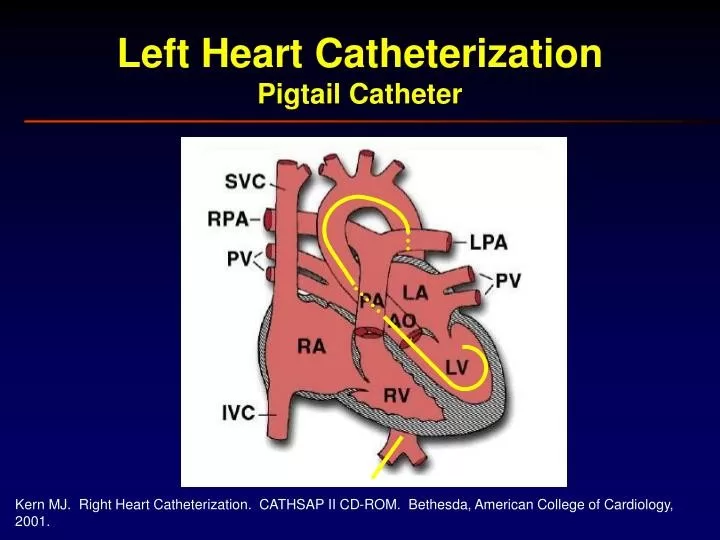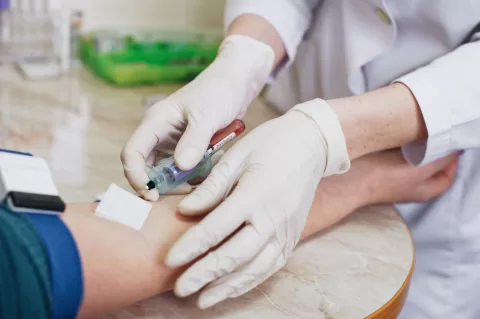Left Heart Catheterization (LHC) is a pivotal diagnostic tool in the field of interventional cardiology, utilized to evaluate and treat a range of heart conditions. This procedure involves the insertion of a catheter into the heart, enabling cardiologists to assess cardiac function and diagnose heart disease with remarkable precision. Coupled with Coronary Angiography, it allows for detailed imaging of the coronary arteries, which is essential for determining blockages and managing heart disease effectively. By combining these cardiac procedures, healthcare professionals can significantly improve patient outcomes through targeted treatment strategies. Understanding the intricacies of Left Heart Catheterization is vital for anyone interested in the advancements in heart disease diagnosis and management.
Often referred to as cardiac catheterization, Left Heart Catheterization involves threading a catheter through the vascular system to the heart’s left side for comprehensive evaluation. This critical intervention, along with innovations like Coronary Angiography, has transformed how cardiac diseases are diagnosed and treated. These techniques provide essential insights into the health of the heart, helping clinicians make informed decisions about managing heart ailments. Also considered a cornerstone in cardiac diagnostics, Left Heart Catheterization not only aids immediate evaluation but also supports long-term management of patients at risk for cardiovascular diseases. With advancements in these interventional techniques, medical professionals can enhance both the accuracy of diagnoses and the effectiveness of treatment, ultimately leading to improved patient outcomes.
Understanding the Role of Left Heart Catheterization in Cardiology
Left Heart Catheterization (LHC) is a cornerstone of diagnostic procedures within cardiology that allows for an in-depth evaluation of heart function. During this minimally invasive procedure, a catheter is strategically placed in the arteries, which enables cardiologists to measure pressures in the heart’s chambers and assess valve functions. This proactive approach is pivotal in diagnosing potential heart diseases at early stages, where timely interventions can significantly alter the patient’s health trajectory. Furthermore, the gathering of blood samples during LHC is crucial for understanding a patient’s specific cardiac conditions.
With conditions like coronary artery disease often latent until they reach advanced stages, employing LHC early can lead to timely and appropriate management. Moreover, combining LHC with other cardiac procedures can provide a comprehensive view of a patient’s cardiovascular health, ensuring that clinicians have all necessary data to devise effective treatment plans.
Considering interventional cardiology, LHC serves as both a diagnostic and therapeutic tool. The real-time data gathered during the procedure can lead to immediate treatment options, such as angioplasty or stenting, if significant blockages are identified. This dual capability not only aids in refining the patient’s diagnosis but directly influences their treatment strategy, thereby enhancing patient outcomes. As ongoing studies continue to examine LHC’s role in evolving cardiovascular practices, its importance in precise heart disease diagnosis becomes indisputable. LHC is not merely a procedural formality; it’s a critical determinant in guiding the continuum of cardiac care.
Coronary Angiography: Importance and Implications for Heart Health
Coronary Angiography (CA) is integral to the diagnostic framework of patient care in cardiology, providing detailed visualization of coronary arteries using contrast dye and X-ray imaging technologies. This procedure facilitates the diagnosis of coronary artery disease (CAD) by exposing narrow or blocked arteries that can negatively impact blood flow to the heart muscle. Such diagnostic clarity is vital for developing treatment strategies that may greatly improve a patient’s heart health, particularly in managing heart disease outcomes through timely interventions.
Moreover, Coronary Angiography buttresses interventional approaches. If significant artery obstructions are identified, cardiologists can often perform corrective procedures on-the-spot, such as placing stents to enhance blood flow. This capacity for real-time intervention is paramount, as it allows for the immediate alleviation of symptoms and reduces the risk of more severe cardiovascular events such as heart attacks, thus benefiting patient outcomes significantly.
In addition to its immediate diagnostic and therapeutic uses, Coronary Angiography is an evolving field where recent advancements strive to enhance precision and safety. Emerging techniques in coronary CT angiography are showing promise for those experiencing stable chest pain, facilitating better diagnostic accuracy while minimizing invasiveness. These innovations underscore the importance of coronary angiography as a preventive tool that can avert major adverse cardiovascular events. As cardiologists increasingly rely on these advanced imaging techniques, patient health management continues to improve, reflecting a positive trend in the field of cardiac care.
Benefits of Integrating LHC and Coronary Angiography
Integrating Left Heart Catheterization (LHC) with Coronary Angiography (CA) presents a multifaceted approach in diagnosing and managing heart diseases. The synergy of these procedures allows for simultaneous evaluation of heart function and coronary artery health. When both tests are performed together, cardiologists can quickly assess the overall cardiovascular status of patients presenting with symptoms or risk factors for heart disease. This comprehensive assessment ensures that no underlying issues are overlooked, leading to a swift and targeted response in treatment.
Furthermore, the benefits of combining LHC and CA extend beyond immediate diagnostic revenues. Integrated procedures enable clinicians to make informed decisions regarding treatment pathways, such as selecting appropriate pharmaceutical therapies or recommending lifestyle interventions, thereby enhancing longer-term patient outcomes. The real-time diagnostic information empowers healthcare providers to tackle heart disease effectively, reinforcing preventive strategies to mitigate future cardiac risks.
Additionally, the collaborative approach of using LHC and CA has been shown to facilitate improved interactions between healthcare providers and patients. With clearer insights into patient conditions, clinicians can have meaningful discussions about risks and treatment options, tailoring selections that align with individual needs. This personalized approach enhances patient engagement and compliance—critical elements for long-term management of heart diseases. As advances in cardiac procedures continue to emerge, the integration of LHC and CA will remain pivotal in evolving heart health landscapes.
Patient Outcomes: Advancements and Insights from Cardiac Procedures
The outcomes for patients undergoing Left Heart Catheterization (LHC) and Coronary Angiography (CA) have seen remarkable improvements due to advances in technology and techniques. Studies indicate that utilizing Coronary CT Angiography for patient management can significantly reduce the occurrence of major adverse cardiovascular events by providing clear diagnostic pathways and intervention strategies that align with best practices in cardiac care. As precision medicine becomes increasingly integrated into cardiology, these advancements not only enhance diagnostic accuracy but also lead to improved long-term patient health outcomes.
Furthermore, emerging data shows that timely interventions facilitated through these diagnostic procedures can lead to significant reductions in non-fatal myocardial infarction rates, suggesting that LHC and CA’s capabilities extend far beyond mere diagnostics, impacting the overall prognosis positively. Continuous monitoring and modifying patient management strategies based on real-time data obtained during these procedures is essential in achieving optimal outcomes in cardiovascular patient care.
Patient education and understanding of the implications of these procedures are also gaining focus. As patients become more informed about their heart health, their proactive involvement can lead to better adherence to prescribed treatment plans, further improving outcomes. Healthcare providers are encouraged to discuss the potential risks and benefits of LHC and CA with patients comprehensively. Through shared decision-making, risks can be managed more effectively while promoting healthier lifestyle choices that contribute to long-term cardiovascular wellness. As the landscape of cardiac procedures continues to evolve, patient-centered care remains a cornerstone of effective cardiovascular health management.
Exploring Recent Trends in Cardiac Diagnostic Innovations
With the rapid evolution of interventional cardiology, new technologies and techniques are continuously transforming cardiac diagnostic procedures, including Left Heart Catheterization (LHC) and Coronary Angiography (CA). Recent advancements such as enhanced imaging technologies and less invasive methodologies have significantly improved both the safety and accuracy of these procedures. These innovations have not only facilitated better visualization of coronary arteries but also minimized the risk of complications for patients undergoing procedures in high-stakes environments.
Moreover, the research spotlight on coronary CT angiography has unveiled its potential as an alternative to traditional methods in diagnosing coronary artery disease. Evidence suggests early utilization of these non-invasive techniques can streamline patient care, allowing for quicker interventions and a reduction in healthcare costs associated with complications from delayed diagnoses. Such advancements highlight the ongoing commitment within the field to refine cardiac care practices while optimizing safety and improving patient outcomes.
As new methodologies come to the forefront, healthcare professionals must remain adept at incorporating these innovations into routine practices, ensuring that every patient benefits from the latest advancements in heart disease diagnostics. Regular training and updates on emerging technologies will empower cardiologists to make informed decisions when configuring diagnostics and treatment protocols. Overall, embracing these innovations not only enhances patient outcomes but also aligns with the broader goals of personalized medicine in managing heart health.
Frequently Asked Questions
What is Left Heart Catheterization and how is it used in heart disease diagnosis?
Left Heart Catheterization (LHC) is a diagnostic procedure that involves inserting a catheter into the left side of the heart to measure pressures, assess heart valve function, and obtain blood samples. It is crucial in diagnosing heart diseases such as coronary artery disease and heart valve disorders, providing insights that guide treatment decisions.
How does Left Heart Catheterization relate to Coronary Angiography in interventional cardiology?
Left Heart Catheterization is typically performed alongside Coronary Angiography, which involves injecting contrast dye into the coronary arteries to visualize blockages or narrowing. Together, these procedures form a key component of interventional cardiology, helping doctors make informed decisions regarding patient treatment and management.
What are the benefits of using Coronary Angiography during Left Heart Catheterization?
Coronary Angiography performed during Left Heart Catheterization allows real-time imaging of the coronary arteries, helping to identify blockages or narrowed vessels. This information is essential for guiding immediate therapeutic interventions, such as angioplasty or stenting, thereby improving blood flow and patient outcomes.
What risks should patients be aware of before undergoing Left Heart Catheterization?
While Left Heart Catheterization is generally safe, patients should be informed of potential risks including bleeding at the insertion site, infection, and allergic reactions to the contrast dye. A thorough discussion with healthcare providers can help ensure informed consent before undergoing this cardiac procedure.
How has recent research improved patient outcomes in Left Heart Catheterization and Coronary Angiography?
Recent research has advanced the techniques used in Left Heart Catheterization and Coronary Angiography, leading to enhanced diagnostic accuracy and treatment options. Innovations, such as coronary CT angiography, have been linked to lower rates of non-fatal myocardial infarction and better long-term management of patients at risk for heart diseases.
| Procedure | Description | Key Benefits | Considerations and Risks |
|---|---|---|---|
| Left Heart Catheterization (LHC) | A procedure where a catheter is inserted to the left side of the heart to measure pressures, assess valve function, and obtain blood samples. | – Diagnosis of CAD and heart valve disorders. – Real-time imaging for guiding treatments like angioplasty and stenting. – Long-term management and monitoring of patients. | – Bleeding at insertion site – Infection risks – Allergic reactions to contrast dye |
| Coronary Angiography (CA) | An imaging technique using contrast dye to visualize coronary arteries for blockages through X-ray images. | – Identification of blockages to guide treatment decisions. – Improvement in diagnostic accuracy with advancements. – Helps reduce adverse cardiovascular events through proactive management. | – Similar to LHC: bleeding, infection, allergic reactions. |
Summary
Left Heart Catheterization (LHC) is an essential procedure in modern cardiovascular medicine that enables healthcare professionals to evaluate heart health and diagnose various heart-related diseases. By utilizing advanced techniques such as coronary angiography, LHC provides critical insights into heart function and guides treatment strategies. These procedures not only facilitate immediate therapeutic interventions but also play a significant role in long-term patient management. As ongoing research continues to enhance their efficacy and safety, LHC and CA are positioned as pivotal tools in the proactive management of cardiovascular health.
The content provided on this blog (e.g., symptom descriptions, health tips, or general advice) is for informational purposes only and is not a substitute for professional medical advice, diagnosis, or treatment. Always seek the guidance of your physician or other qualified healthcare provider with any questions you may have regarding a medical condition. Never disregard professional medical advice or delay seeking it because of something you have read on this website. If you believe you may have a medical emergency, call your doctor or emergency services immediately. Reliance on any information provided by this blog is solely at your own risk.







